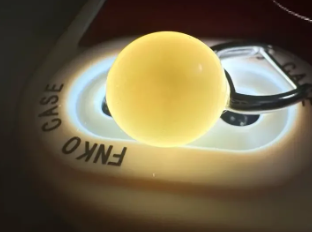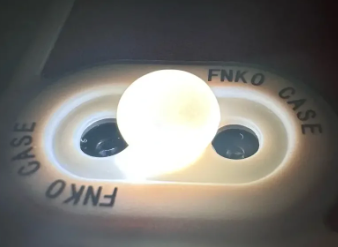One Trick to Help You Distinguish Between Real and Fake Pearls

Step 1:
Prepare a mobile phone or a lamp.
Step 2:
Place the pearl to be identified under the light source.
Genuine pearls:
When illuminated, genuine pearls exhibit a soft moon-like or reddish luster.
Upon closer inspection, they have tiny irregular pores, confirming their authenticity.

Fake pearls:
Fake pearls emit a strong light, have no pore distribution, and display uneven internal structure.
Tips:
Dark pearls like Tahitian pearls are not translucent.
Direct lighting can reveal the true nature of partially translucent "dyed Tahitian pearls."

Additionally, several common tricks can help us distinguish between genuine and fake pearls:
Temperature sensitivity:
Genuine pearls feel cool to the touch and reach body temperature when worn, while plastic pearls lack coolness.
Observation of overtones:
Genuine pearls display ever-changing iridescence and luster, whereas imitation pearls have a uniform, dull color.
Fire test:
Genuine pearls do not turn black when exposed to fire, whereas plastic pearls melt and turn black.
Friction test: Genuine pearls create noticeable abrasion when rubbed together, with a small amount of pearl powder shedding. The friction marks disappear upon further rubbing. In contrast, glass pearls and plastic pearls do not create a grainy sensation when rubbed together, and the surface easily flakes off in large pieces.


Leave a Comment